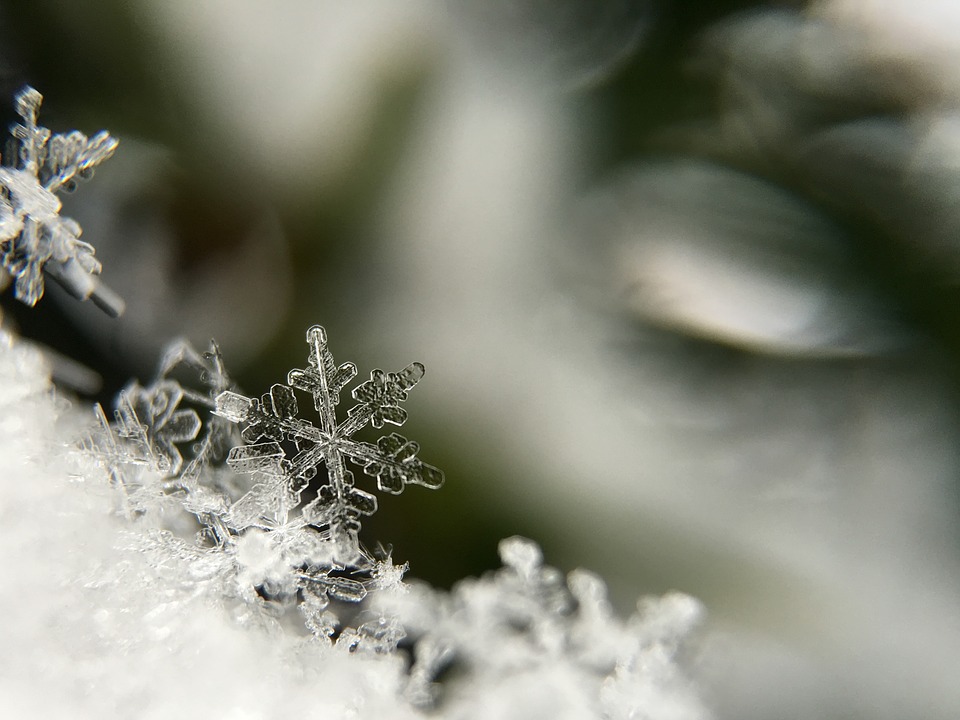The chemistry behind snowflakes

How do these delicate frosty snowflakes form, and are they truly unique?
Snowflakes form around tiny particles of dust or pollen floating through the atmosphere. As a particle passes through clouds of water molecules, they stick to its surface to form a droplet. At freezing temperatures high in the atmosphere, this droplet begins to freeze and form crystal faces.
Crystal formation
These crystals begin the formation of the shape of snowflakes. The reason for their symmetrical shape is due to the structure of the water molecules. Hydrogen and oxygen atoms bond together at a 104.5-degree angle. This creates a V-shaped structure with two hydrogen atoms attached to one oxygen atom in the middle. As water molecules bond to one another, six of these ‘V’ structures form a hexagonal shape. This process continues and the crystals begin to fall as more water molecules join the frozen particle party. As many as 1 billion billion water molecules can be present in the average snowflake!

Effect of temperature
The surrounding temperature of falling snowflakes will increase as it nears the ground. This limits the amount of freeze and the number of water molecules that can join onto it. This creates spiking symmetrical structures, although with many variations. As the old saying goes, no two snowflakes are ever the same. During its descent, several factors affect the eventual shape and size of a snowflake.
Hydrogen atoms
Humidity, wind, temperature and even the variant of hydrogen atoms present have an effect on the formation of snowflakes. Unless each individual water molecule and forming crystals are exposed to the exact same conditions they will not form in the exact same way, which explains the countless varieties of snowflakes.
This article was originally published in How It Works issue 119, written by Scott Dutfield
For more science and technology articles, pick up the latest copy of How It Works from all good retailers or from our website now. If you have a tablet or smartphone, you can also download the digital version onto your iOS or Android device. To make sure you never miss an issue of How It Works magazine, subscribe today!





